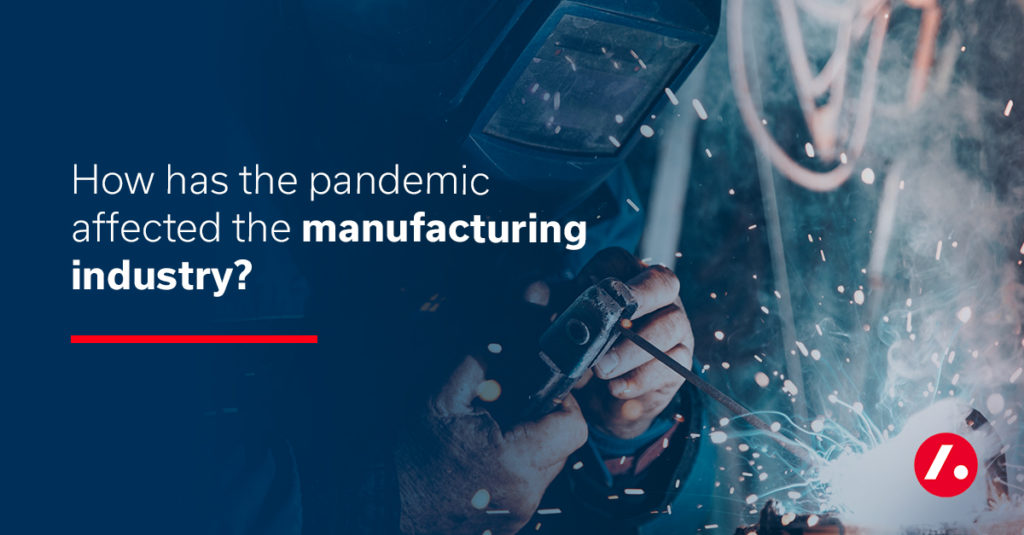
How COVID-19 Has Complicated Manufacturing Hirings
As the coronavirus has wreaked havoc on industries around the world, the pandemic continues to leave a significant impact on the manufacturing industry. Not only have the supply and demand of goods been impacted, but the number of available members of this industry workforce is now low.
The manufacturing industry has long been considered a beacon of workforce stability for millions of Americans. In 2019, manufacturing was one of the largest industry employers in the United States, employing over 13 million people nationwide. But due to extreme pressures to reduce operational costs, many manufacturers have been forced to cut down on the sizes of their workforce in an effort to maintain product inventory levels and salvage their supply chains.
Here are some of the many challenges that manufacturing leaders have been forced to overcome since the COVID-19 outbreak:
A Lack of Available Workers
In recent months, the industry has been stricken by a shrinking candidate pool. Unlike workers in the realm of business and professional services who are reaping the benefits of work-from-home life, manufacturing employees are required to be on-site and are unable to take advantage of remote work options. As health concerns remain top-of-mind, many workers have been reluctant to return to the workplace, fearing for their individual well-being and that of their families. Manufacturers are finding it increasingly difficult to discover skilled workers who are willing and able to return to a factory or other on-site setting.
Resorting to Overseas Operations
It comes as no surprise to see companies exporting their production facilities to countries that have not been heavily impacted by COVID-19. In March, Samsung decided to move part of its smartphone production overseas to Vietnam, a country that has effectively controlled the spread of the pandemic. This move not only provided the company with access to an expanded talent pool, but also allowed them to slash labor costs in the process. Moreover, Samsung hoped that its transition to Vietnam would minimize potential interference in its production timelines and overall operations.
Dealing with Social Distancing
Large manufacturers have also been affected by social guidelines and other precautionary measures that have taken root globally. As many manufacturing workers operate within close proximity of one another, companies have mandated the use of masks, gloves, and other personal protective equipment to ensure the safety of its employees. Some have implemented precautionary measures such as temperature screenings, sanitation equipment, and protective glass barriers. Others have even experimented with networks of wireless IoT sensors and devices to limit access to occupied workspaces. These safety measures have prompted added costs for manufacturers. As a result, many companies have been rethinking and revamping the layouts of their operational facilities to lessen the frequency of contact between employees.
Figuring Out Flexible Work Assignments
In an attempt to further lessen worker density on the manufacturing floor, companies have resorted to flexible work assignments. These changes in work schedules are implemented to reduce the number of employees who are present on-site. Companies are now designing and utilizing strategic plans to cut down on the amount of traffic in their facilities by adjusting the workday into two or three large shifts with fewer workers on each assignment. Other manufacturing companies have implemented zoning facilities to limit workers’ access to other areas of a building or workspace. These measures ultimately promote more effective forms of social distancing. While there may be a learning curve that comes with safety protocols, these ideas must be investigated to enhance the protection of employees.
Enticing Employees Back to Work
With historic numbers of individuals currently claiming state and federal unemployment benefits, many manufacturing workers are earning more money while furloughed or laid off than they did in the workplace. According to a study conducted by economists at the University of Chicago, approximately 68 percent of unemployed workers can receive unemployment benefits that exceed the amount that they previously earned at work. Finding ways to attract these employees back to work has been a struggle for manufacturing companies. Leaders have been forced to implement creative strategies to incentivize workplace returns. Many companies have chosen to implement sign-up bonuses, increased pay rates, added benefits, and free meals to entice and motivate workers to perform. Not only do these ideas boost office morale, but they also can help to improve company culture.
What’s To Come?
The future of hiring in the manufacturing industry will be significantly hindered by the COVID-19 pandemic. As companies begin planning for the challenges that lie ahead, some will begin to explore automated technologies to lessen their reliance on human capital. Others will look to utilize services like Acara’s employer of record to augment their workforce. Until then, manufacturing leaders must continue to stay nimble in their approach to recruit and retain top-tier talent to maintain the continued success of their organization.
Interested in learning more about how Acara can help your manufacturing organization in its quest for quality talent? Check out our manufacturing recruitment services here.
Contact us to learn more about our services.




